Targeting manufacturing employment in Southwest Florida
SARASOTA — At Quality Enclosures, a Sarasota company that makes glass-and-aluminum shower doors, owner Steve Schwartz has turned the Great Recession to his advantage.
In November 2010, he acquired a glass-tempering operation in Port Orange, near Daytona Beach, which allowed him to harden his own glass and, ultimately, add to profits. Before that acquisition, he’d had to farm the process out.
Now, he wants to move the glass tempering here and expand his 60-person payroll. But to continue to grow, Schwartz is going to need to move some workers from entry-level positions into roles that require more specialized knowledge and skills.
That, in turn, should create more openings for new workers.
For economic development officials, fostering that process — known as “creating a career ladder” — is in itself an opportunity, especially for manufacturing operations.
The opportunity is so great that, in 2012, regional groups involved in economic development are going to be doing the career-ladder dance in unison for the first time.
What the groups, collectively, have realized is that a couple of different mismatches are keeping the local economy from growing.
For one, the people who are out of work or dramatically underemployed often do not have the skills that are in demand. For another, the region’s educators are not always teaching the skills that would qualify students for actual jobs.
“We have a kind of misalignment of the people looking for work and the companies that are growing,” said Ted Ehrlichman, chief operating officer at the Suncoast Workforce Board, which runs three federally funded offices catering to job seekers in the region.
The jobs that are available, many of which are in manufacturing, “are in a very specific industry. They have a very targeted need,” Ehrlichman said.
His group is one of those now collaborating with Bradenton-based CareerEdge, a well-endowed non-profit that elicits information from employers about what skills they need in existing or new workers and then matches employers with needed training, whether it is in-house, on-line or at a local school.
To help better identify the scope of the need, CareerEdge executive director Mireya Eavey has commissioned a study on current and future job gaps in manufacturing operations.
By April, she hopes to have documented the need for machine tool operators and other similar specifics that will, in turn, help her convince educators to invest in equipment and curriculums to bridge this gap.
“Before they put in this machining class, they want to know how many jobs,” Eavey said. “Well, I am going to give it to them.”
Meanwhile, CareerEdge has $400,000 to distribute, and it is is accepting applications from employers for grants and support. Eavey’s deadline is Feb. 10.
Her goal for 2012 is to direct a substantial amount of money into training programs for use by manufacturers. She believes the group will end up with half a dozen companies that qualify, ranging in size from bigger companies — like bandage manufacturer Aso Corp. — to smallish outfits, like Quality Enclosures.
Collaborative efforts like this are not new, of course, but asking manufacturers to become directly involved is, she said.
“I am definitely on board,” said Schwartz, Quality Enclosures’ owner.
So far, Schwartz has been focused on more education for his workers through the Suncoast Workforce Board, which has arranged for his managers to take an online training class.
But he is also considering applying to CareerEdge, thanks to encouragement he has received from the Sarasota Economic Development Corp.
The CareerEdge application is formatted in a way that nudges employers into creating career ladders for workers, Eavey said.
“The manufacturing is going to be very competitive,” Eavey said. “An employer that wants $50,000 and isn’t going to do any promotion, I can tell you they aren’t going to get a penny.”
The stakes, analysts contend, extend far beyond the success of niche manufacturers like Quality Enclosures and into the regional economy overall.
While construction, government and information-related businesses continue to shed jobs in Florida, trade, health services and manufacturing have largely turned around, according to state and University of Central Florida data.
While manufacturing employment continued to wobble through the second half of 2011, the sector “is emerging from this period of globalization as competitive as it has been in many years,” said Sean Snaith, a University of Central Florida economist who regularly publishes “Florida and Metro Forecast.”
He sees continued, gradual growth in employment in manufacturing through 2014, the result of a U.S. dollar weaker than currencies in emerging markets, where economic expansion is strong.
“Given the major decline in construction and the economic downturn hurting tourism, manufacturing is finally getting the attention it deserves,” said Jennifer Behrens Schmidt, who runs Venice-based Atlantic Mold and Machining Corp. and who also is president of the Sarasota Manatee Area Manufacturers Association.
“In an economy where jobs are hard to come by, almost every manufacturer I know is hiring or accepting résumés or has added jobs in the past year,” she said.
Atlantic Mold itself provides a great example of the wealth-spreading effect that manufacturing can have in a community.
While it only employs six people, Atlantic Mold plays a crucial role in creating the plastic glassware made by Tervis Tumbler, one of Sarasota County’s larger employers.
That is because Atlantic Mold makes the steel molds that another company, Octex Corp., uses to create the plastic inner and outer shells that eventually become one of Tervis’ signature insulated tumblers.
“For every large company, it requires the support of many other tier-two and tier-three companies that are also great jobs,” Behrens Schmidt said.
“We would be larger, but we can’t find people with the skill sets,” she said. “Journeymen mold makers — it is a very advanced manufacturing skill set. They are difficult to find.”

